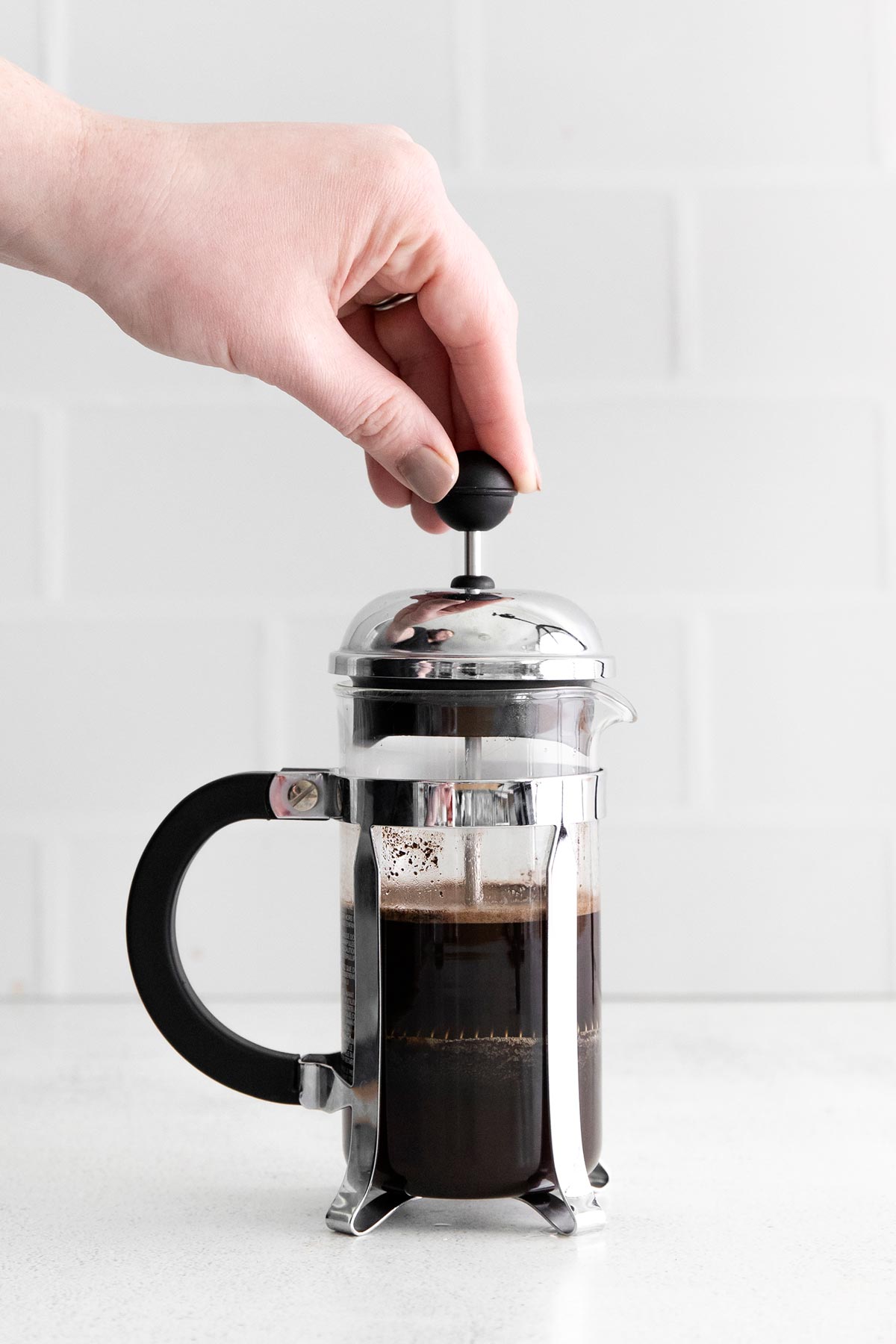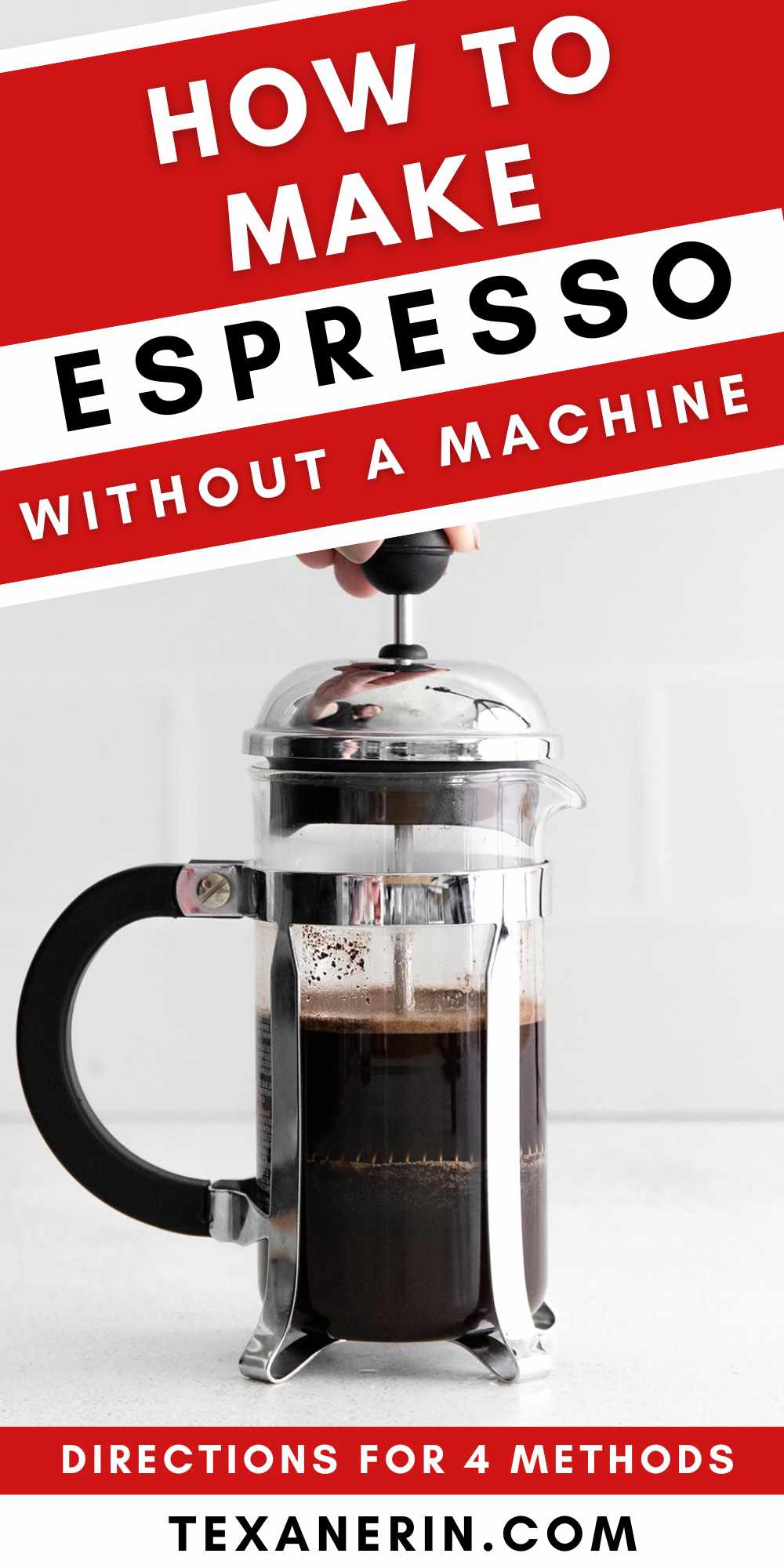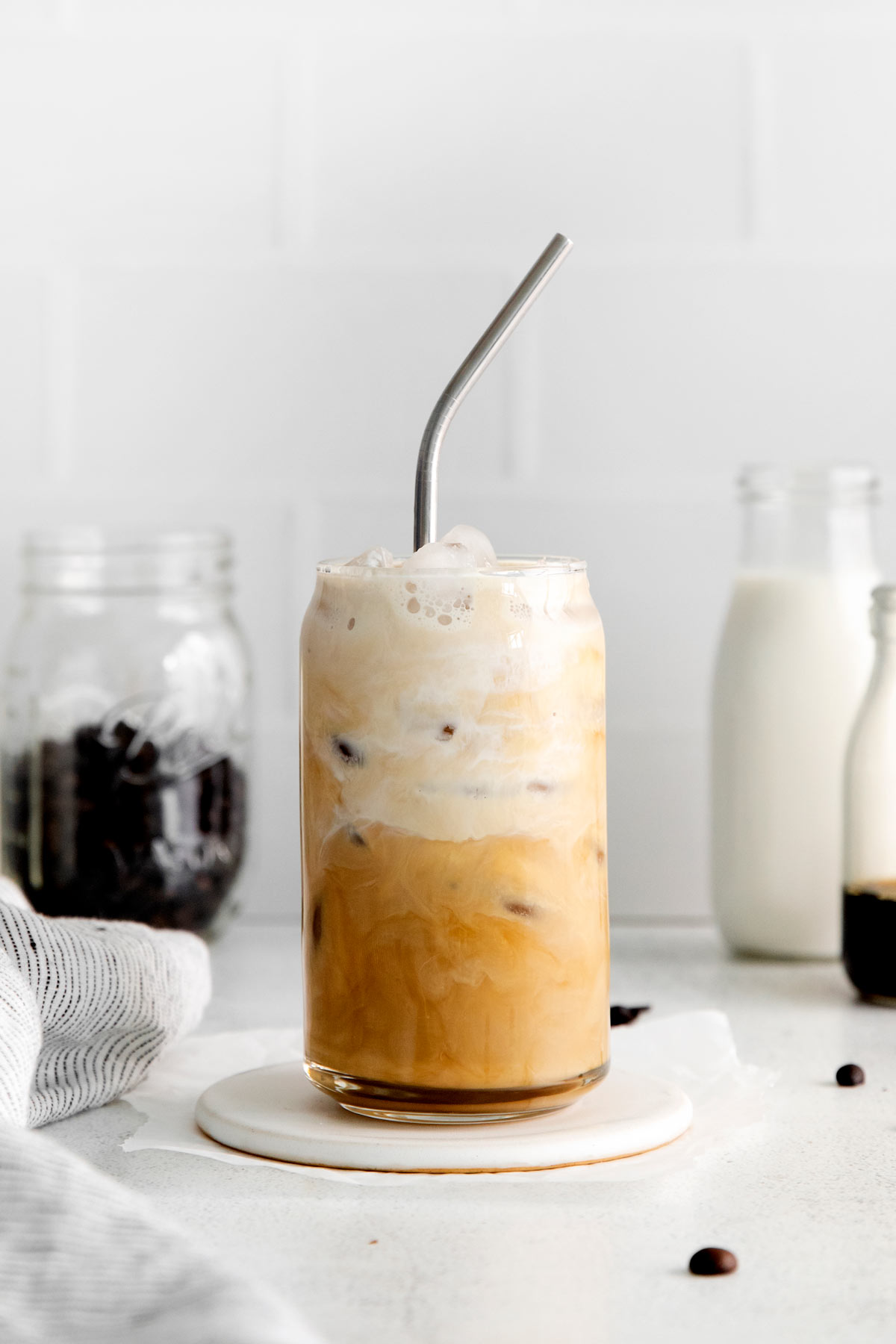As an Amazon Associate, I earn from qualifying purchases. For more info, see my disclosure.
Learn how to make espresso without a machine in the comfort of your own kitchen. We’ll explore the best ways to get espresso-like coffee without you having to drive to your nearest coffee shop.
Fancy espresso machines are easy to find these days, but they’re usually pretty expensive and take up a ton of space. So today, we’ll explore some options that won’t break the bank but will deliver on taste and quality.
I should say that not all espresso machines are super expensive. There’s this one that costs $129 and includes a steam wand to get that perfect dollop of foam.
And then there’s coffee pod machines. They can be purchased for $35 and up. The problem with these machines is that while they’re fast and convenient, they produce excessive plastic waste.
One study found that only 27% of people recycled plastic pods, meaning 45 billion pods end up in landfills every year, which comes to 123 million pods per day! And that’s just from the US.
To reduce plastic waste, you can purchase a reusable coffee capsule set made of stainless steel. There are many types, so you’ll want to make sure you buy a kit that fits your coffee pod machine. The prices start at $20, and they make perfect gifts for the coffee lover in your family.
There are several more inexpensive and environmentally-friendly tools to get that robust espresso taste with a bit of crema on top. So, let’s take a look.
The Italian moka pot
The Italian moka pot can be found in every Italian home (this is according to my assistant, Shani – a Texan living in Sicily :)) It can take a few tries to get a feel for it, but it’s worth it. And it’s perfect for making a Dolce Latte.
For most Italians, the original Moka Express is the iconic stovetop espresso maker. A moka pot uses hot water pressure to force steam through the finely ground coffee, creating a concentrated flavor.
They range in cup size and can be found for under $25. The moka pot is suitable for gas, electric and induction stovetops with an adapter plate.
It gives you a strong, full-bodied brew with a rich, creamy texture similar to espresso, only slightly less intense.
How to make espresso in a moka pot
Note! Full directions are in the ingredients box below for all the methods.
To prepare the coffee, fill the boiler up to the safety valve, fill the funnel with 18-20 grams ground coffee without compacting it, screw the pot and boiler on tight, and place it on the stovetop. Once it starts to gurgle, turn off the fire, stir it and it’s ready to pour.
The French press
The French press is a coffee maker that uses immersion to brew rich, flavorful coffee. It’s a simple device consisting of a glass or stainless steel carafe with a plunger and a filter screen to separate the coffee grounds from the brewed coffee. It preserves the coffee’s natural oils and flavors and is free from sediment and grit.
The immersion of the coffee grounds in the hot water leads to a rich, full-bodied, concentrated flavor. The oils extracted from the coffee create a smooth, creamy texture. Using a darker roast will lend to earthy, smoky undertones for a full-flavor coffee.
Prices range from $10 to $50, and they’re handy when you have company. It’s perfect for making a French Vanilla Cappuccino. Plus, you can use the French press to froth milk.

How to make espresso in a French press
To make French Press Espresso, you’ll want 7 tablespoons (39 grams) medium-coarse coffee and 1 cup (237 ml) of 195 °F (91 °C) water.
- Add the ground coffee beans to the bottom of the French press.
- Pour water in a circular motion to cover the grounds with a small amount (approximately 78 grams or 5 tablespoons). Avoid stirring.
- Wait for 30 seconds to allow the ground coffee to bloom.
- Add the remaining water without stirring.
- Attach the plunger without pushing it down.
- Let it steep for 2-4 minutes. For light roasts (typically not used in espresso), two minutes is sufficient, while four minutes is suitable for dark roasts (likely what you’re using).
- Gently press down the plunger until you encounter resistance from the coffee grounds. Avoid pressing down too forcefully to prevent disturbing the grounds.
French Press Cold Brew is perfect for the summer months. Just remember that it requires a longer brew time, so you need to plan ahead.
Cold brew is also perfect for making Strawberry Latte for an extra-special treat.
The mason jar
Another great method for producing cold brew that’s the least expensive to make is Mason Jar Cold Brew. You just need a jar and a fine mesh sieve, coffee filter or cheesecloth.
How to make mason jar espresso
- Use 5 ounces (142 grams) of coarse coffee beans and 24 ounces (680 grams) of filtered water. Place the ground coffee at the bottom of the jar. Pour over filtered, cold water to saturate the grounds, stir, and wait a minute for the coffee to bloom.
- Then, add the rest of the water. Put a lid on it and place it in the fridge for 12-18 hours.
- Once steeped, you can filter it through a sieve, paper coffee filter or cheesecloth. Rinse the mason jar and pour the strained coffee back into the jar with a lid.
You’ll have a concentrated espresso-like cold brew lasting 7 to 10 days in the fridge. You’ll want to dilute it 1:1 if you make a drink calling for cold brew like this Starbucks Chocolate Cream Cold Brew Recipe.

The AeroPress
Although this is not my favorite method for everyday espresso, it’s super convenient for travel because it’s made for on-the-go coffee. It’s compact and convenient and pulls a strong coffee flavor.
Prices start at around $40, but it’s better to take it along than use the coffee pot at the hotel. 😉
This Aeropress Go is a little smaller than the original but can produce an 8-ounce cup or 1-3 servings of espresso-style coffee in just one minute.
How to make AeroPress espresso
- Begin by pre-wetting your filter.
- Place the AeroPress in the standard upright position on a scale. Add 20 grams of finely ground coffee to the chamber.
- Pour 60 grams of 205 °F (96 °C) water within 10 seconds.
- Stir for 10 seconds to ensure complete saturation.
- Take it off the scale and plunge as swiftly as you can.

Grind size and roast
With each method, you’ll want to take note of the grind size to get the best results.
For example, the moka pot uses a rather fine grind, whereas the French press uses a medium-coarse grind. If you’re looking for a grinder, you can buy one for $20 and up. It’s worth grinding your own beans, and you can also grind spices with it.
And as for Espresso Beans vs Coffee Beans, take a look at the post to see what roast is best for you.

Espresso Cocktails
And don’t forget, espresso makes excellent cocktails. Here are a few of my favorites:
That’s it! I hope you find the perfect method on how to make espresso without a machine. I’d love to hear what works best for you. Just drop a comment below and enjoy. Thanks! 🙂
❀

- Prep Time:
- Cook Time:
- Ready in:
- Yield: varies
Ingredients
- coffee beans (see below for grind and amount)
- water (see below for temperature and amount)
Directions
- Grind your beans to be a bit coarser than espresso-grind.
Fill the boiler with water up to the safety valve, and fill the funnel with coffee (about 18-20 grams depending on your pot’s size) without pressing it down.
Heat the moka pot at medium heat (use a trivet for gas stoves or a heat diffuser for electric stoves, if necessary).
Monitor the espresso filling the collector chamber. As steam pressure builds, water will push through the coffee into the upper compartment.
When a gurgling noise is heard, it indicates all the water has moved into the top chamber. Immediately remove from the heat to prevent the coffee from becoming overly bitter and pour into your cup.
- You need 1 cup (237 ml) of 195 °F (91 °C) water.
Place 7 tablespoons (39 grams) medium-coarse ground coffee into the base of the French press.
Pour a small amount of water (around 78 grams or 5 tablespoons) in a circular motion to cover the grounds with, refraining from stirring.
Allow the ground coffee to bloom for 30 seconds.
Pour in the remaining water without stirring. Attach the plunger without pushing it down.
Let the coffee steep for 2-4 minutes; two minutes for light roasts (typically not used in espresso), and four minutes for dark roasts (which you’re likely using).
Press down the plunger gently until you feel resistance from the coffee grounds, avoiding excessive force to prevent disturbance. Pour into your cup.
- Use 5 ounces (142 grams) of coarse coffee beans and 24 ounces (680 grams) of filtered water.
Place the ground coffee at the bottom of the jar.
Pour over filtered, cold water to saturate the grounds, stir, and wait a minute for the coffee to bloom.
Then add the rest of the water.
Put a lid on it and place it in the fridge for 12-18 hours.
Once steeped, you can filter it through a sieve, paper coffee filter or cheesecloth. Rinse the mason jar and pour the strained coffee back into the jar with a lid.
- Begin by pre-wetting your filter and warming your cup. Place the AeroPress in the standard upright position on a scale.
Add 20 grams of finely ground coffee to the chamber.
Pour 60 grams of 205 °F (96 °C) water within 10 seconds. Stir for 10 seconds to ensure complete saturation.
Take it off the scale and plunge as swiftly as you can.
Pour into your cup.
- Store cooled espresso in the fridge.

